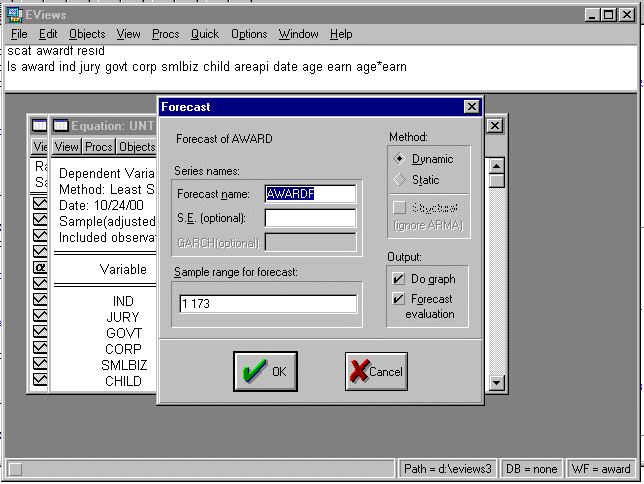





POLS 6482 ADVANCED MULTIVARIATE STATISTICS
Seventh Assignment
Due 22 October 2001






Estimation Command:
=====================
LS AWARD C AGE AREAPI CHILD CORP DATE EARN GOVT JURY SMLBIZ AGE*EARN
Estimation Equation:
=====================
AWARD = C(1) + C(2)*AGE + C(3)*AREAPI + C(4)*CHILD + C(5)*CORP + C(6)*DATE + C(7)*EARN +
C(8)*GOVT + C(9)*JURY + C(10)*SMLBIZ + C(11)*(AGE*EARN)
Substituted Coefficients:
=====================
AWARD = -219.7246158 - 0.6092463913*AGE + 0.006719394952*AREAPI + 20.42366783*CHILD +
63.02345024*CORP + 12.01049539*DATE + 10.72571602*EARN + 184.5738731*GOVT +
131.2040308*JURY + 67.237274*SMLBIZ - 0.1172755132*(AGE*EARN)
With respect to the last test -- whether or not governments, corporations, and small businesses
pay the same amount -- discuss its political significance.
( 1) corp - smlbiz = 0.0
F( 1, 161) = 0.02
Prob > F = 0.8900
Graph the residuals against the fitted values. In STATA, you can do this with
the command: